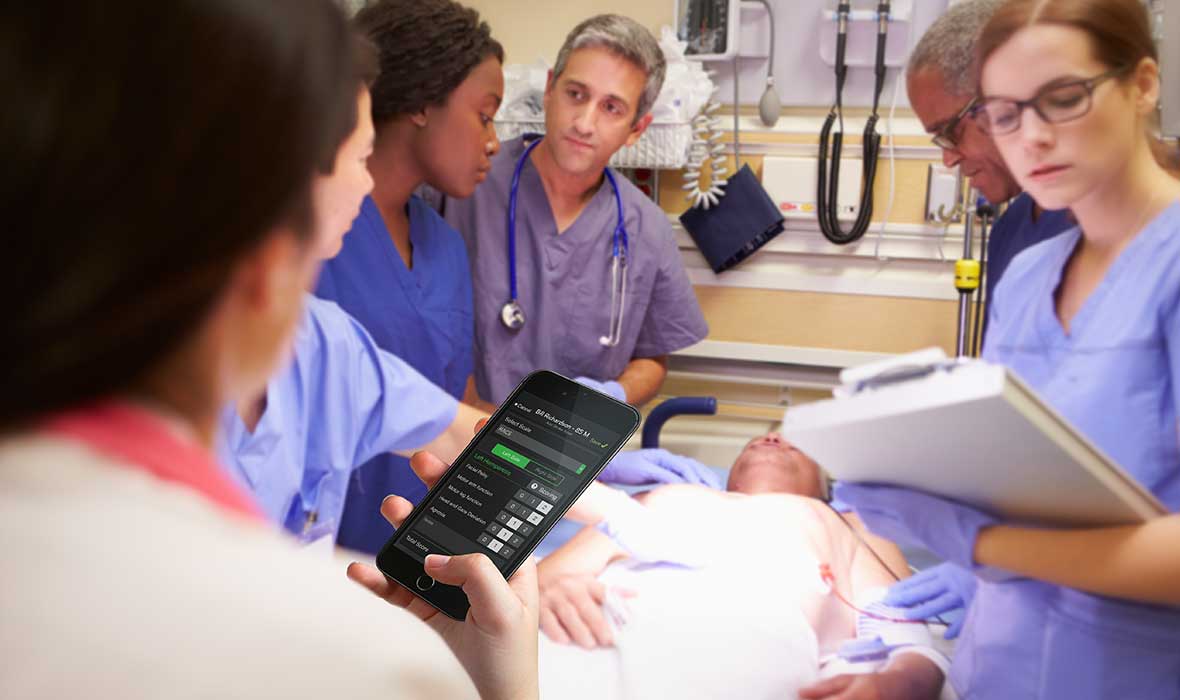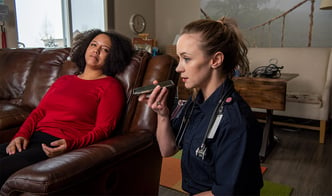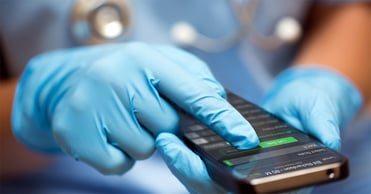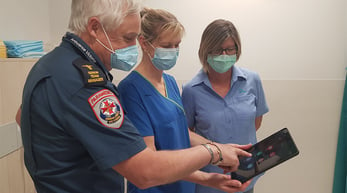Pulsara Around the World - 2025 Recap and January 2026
December Recap After an incredibly busy events year with 102 conferences, trade shows, and sponsorships, December was on the slower side for us, with...
5 min read
 Team Pulsara
:
Oct 30, 2020
Team Pulsara
:
Oct 30, 2020

A new study shows that every 15-minute decrease in door-to-needle time is linked to lower all-cause mortality. How can we work to reduce door-to-needle times?
When a neurologist utters the phrase "time is brain," the implication is that every minute counts in treating each stroke patient. A recent study is further confirming what stroke teams have known since 1993: efficient treatment is everything to better outcomes in stroke care.
This study, published by the Journal of the American Medical Association, shows a definitive correlation between door-to-needle times and outcomes in stroke cases for patients treated with tPA. According to researchers, “each 15-minute increase in door-to-needle times was significantly linked to higher all-cause mortality within 90 minutes after arriving to the hospital.”
 That wasn’t the only connection researchers found. Each 15 minute increase in treatment time also equaled higher all-cause readmission. One of the researchers involved in the study, Greg Fonarow, MD, of the University of California Los Angeles, summarized his takeaway from the findings: “Faster treatment translates into better long-term outcomes in patients with stroke. For every 15 minutes improvement in treatment time, improvements in 1-year outcomes were observed."
That wasn’t the only connection researchers found. Each 15 minute increase in treatment time also equaled higher all-cause readmission. One of the researchers involved in the study, Greg Fonarow, MD, of the University of California Los Angeles, summarized his takeaway from the findings: “Faster treatment translates into better long-term outcomes in patients with stroke. For every 15 minutes improvement in treatment time, improvements in 1-year outcomes were observed."
In 1993, neurologist Camilo Gomez, MD, coined the phrase “time is brain” to illustrate the principle that time is of the essence when it comes to treating strokes. For every minute a stroke goes untreated, the average patient loses 1.9 million neurons. Every minute counts, which is why door-to-needle times have become a mark of quality stroke treatment.
This new study reinforces that shorter door-to-needle times do indeed improve long-term outcomes in ischemic stroke. Christopher C. Muth, MD, assistant professor in the department of neurological sciences at Rush University Medical Center and senior editor of JAMA, explained its significance: “This study fills an important gap in the literature by convincingly documenting the association between faster treatment with intravenous [tissue plasminogen activator] and better long-term outcomes, including 1-year mortality. The findings are yet another reason for clinicians and health systems to design stroke services that can treat patients with acute ischemic stroke with thrombolytic therapy in a rapid fashion.”

This research is important because strokes are the leading cause of cardiovascular disease-related deaths in the United States. Every year, 13.7 million people worldwide suffer a stroke. Of these, over 5 million will die, and another 5 million are permanently disabled. Stroke is the leading cause of adult disability in Canada, and the number of Australians living with the negative effects of a stroke is predicted to more than double to one million within the next thirty years.
Rapid treatment is vital to giving each patient the best possible chance at not only surviving a stroke, but also maintaining their quality of life once they recover.
Given the gravity of these statistics, hospitals around the world are looking for new and innovative ways to reduce their door-to-needle times and improve patients' chances of a good outcome. Most of these approaches revolve around one concept: efficiency.
Recently, a research team in Germany conducted a study using interactive clocks to improve D2N times by incentivizing physicians to be as efficient as possible. During the study, the clocks displayed the amount of time that had elapsed since the patient’s arrival, and would sound a buzzer at intervals to let physicians know whether they were hitting the target time for each stage of treatment. Physicians could avoid the buzzer by completing each stage of treatment within the allotted time and hitting a button to register their progress.
The researchers concluded that the use of the clock did, in fact, help accelerate door-to-needle times: “This study showed that the use of a stroke clock demanding active feedback significantly improves acute stroke-management metrics and, thus, represents a potential low-cost strategy for streamlining time-sensitive stroke treatment.” An emphasis on efficiency and an awareness of the elapsed time makes a significant difference in efficient—and effective—stroke treatment.
Hospitals are also finding that poor or inefficient communication is often a culprit behind inflated door-to-needle times. Coordinating care for a stroke patient takes quite a bit of time and effort. Many stroke coordinators have to make upwards of ten phone calls to coordinate care for a single patient. Non-interoperable communication methods like pagers, fax machines, and phones require information to be repeated multiple times, wasting precious treatment time for patients.
 In order to make treatment more efficient, some hospitals have turned to mobile technology to streamline communication. Communication platforms that have been specifically designed for healthcare teams and fit naturally into existing workflows allow clinicians to save time that they would normally spend on care coordination. When clinicians can instantly build care teams around a patient's needs and communicate with one another in real time, door-to-needle times have been shown to decrease by significant percentages.
In order to make treatment more efficient, some hospitals have turned to mobile technology to streamline communication. Communication platforms that have been specifically designed for healthcare teams and fit naturally into existing workflows allow clinicians to save time that they would normally spend on care coordination. When clinicians can instantly build care teams around a patient's needs and communicate with one another in real time, door-to-needle times have been shown to decrease by significant percentages.
One mobile platform that enables this type of communication is Pulsara, a healthcare communication and telehealth app designed to simplify care coordination for caregivers. Pulsara allows clinicians to communicate with one another and share vital information on the same HIPAA compliant patient channel. This year, several hospitals have released data showing how streamlining their communication with Pulsara has helped greatly reduce time wasted in trying to get patients in for treatment.
Last month, Wendy Barrilleaux, the Neuroscience Service Line Administrator for St. Dominic Hospital in Jackson, Mississippi, shared that St. Dominic’s saw an 18% improvement in their door-to-needle times within six months of implementing mobile technology for communication between team members. “With Pulsara, we now have a secure HIPAA compliant video network that is accessible from the device that all clinicians carry right in their pocket,” said Barrilleaux. “With mobile telemedicine, we not only have a network of providers connected for telemedicine, but these consultations can take place within a patient's channel, which is primed for real-time communication.” St. Dominic’s is continuing to implement new technology to improve stroke care in every way possible. They recently announced that they’ve become the fifth hospital in the world to integrate two leading healthcare technologies, Pulsara and RapidAI, resulting in faster, more efficient stroke care.
CHRISTUS Good Shepherd Medical Center - Longview in Longview, Texas struggled with synchronizing their stroke team on one universal clock. “One challenge we found was that everybody providing care was looking at their own clocks, which weren’t necessarily in sync,” said Jennifer Reeves, RN, MSN, ASC-BC, the stroke program coordinator at CHRISTUS Good Shepherd. “I may be looking at the time on my watch and the charge nurse could be looking at the one on the computer.” In an effort to make sure all members of the care team were watching the same clock, CHRISTUS Good Shepherd implemented Pulsara. This year, they reported a 46-minute average door-to-needle for patients receiving tPA, a 59% decrease from their previous average time of 110 minutes. They now have 100% of their door-to-needle completed in under 60 minutes—and 58% in under 30 minutes. By improving communication and a fostering greater awareness of the passage of time between the members of their stroke team, CHRISTUS Good Shepherd has greatly increased their stroke patients' chances for positive outcomes.
 In 2019, Latrobe Regional Hospital, near Melbourne, Australia, was already doing incredibly well with stroke care, averaging 22 minutes on their door-to-CT times. After dealing with frustrating hindrances in communication between Ambulance Victoria and the hospital, they implemented Pulsara near the beginning of 2020. “Now with Pulsara, we are able to pre-register the patients, so stroke patients can go directly to CT on arrival,” said Janet May, Stroke and Pulsara Coordinator at Latrobe. Comparing the data from March through July of 2019 to the same period in 2020, Latrobe Regional Hospital improved door-to-CT times from 22 minutes down to just 7 minutes on average—a 68% reduction in treatment time. Eliminating the frustrating runaround of missed phone calls and pages has helped Latrobe take their treatment times from great to excellent.
In 2019, Latrobe Regional Hospital, near Melbourne, Australia, was already doing incredibly well with stroke care, averaging 22 minutes on their door-to-CT times. After dealing with frustrating hindrances in communication between Ambulance Victoria and the hospital, they implemented Pulsara near the beginning of 2020. “Now with Pulsara, we are able to pre-register the patients, so stroke patients can go directly to CT on arrival,” said Janet May, Stroke and Pulsara Coordinator at Latrobe. Comparing the data from March through July of 2019 to the same period in 2020, Latrobe Regional Hospital improved door-to-CT times from 22 minutes down to just 7 minutes on average—a 68% reduction in treatment time. Eliminating the frustrating runaround of missed phone calls and pages has helped Latrobe take their treatment times from great to excellent.
The research is clear: in stroke cases, faster treatment equals better outcomes. If we can reduce door-to-needle times for stroke patients, we can help make sure patients are given the best shot at recovery and the best possible outcomes. Efficiency awareness and mobile technology are helping hospitals around the world to improve treatment times for their patients. What are you doing to reduce D2N times at your facility?
Want to look into improving your treatment times, but aren't sure where to start, or even what questions to ask? Check out our blog post: To Improve Treatment Times, It Pays to Become Obsessed With the Process.

December Recap After an incredibly busy events year with 102 conferences, trade shows, and sponsorships, December was on the slower side for us, with...

Editor's Note: In July 2025, EMS1 and Fitch & Associates released their annual EMS trend survey, What Paramedics Want, proudly sponsored by Pulsara....
![[PRESS RELEASE] Published Research Finds Up to 31% Faster STEMI Treatment Times in Rural Hospital Setting with Pulsara](https://www.pulsara.com/hubfs/_1_website-page-blog-assets/pulsara-hosp-teams-assign-cardio-stemi-rn-1200x701.jpg)
Published research shows how using Pulsara, alongside standardized field activation and a focus on stakeholder relationships, improves STEMI care and...